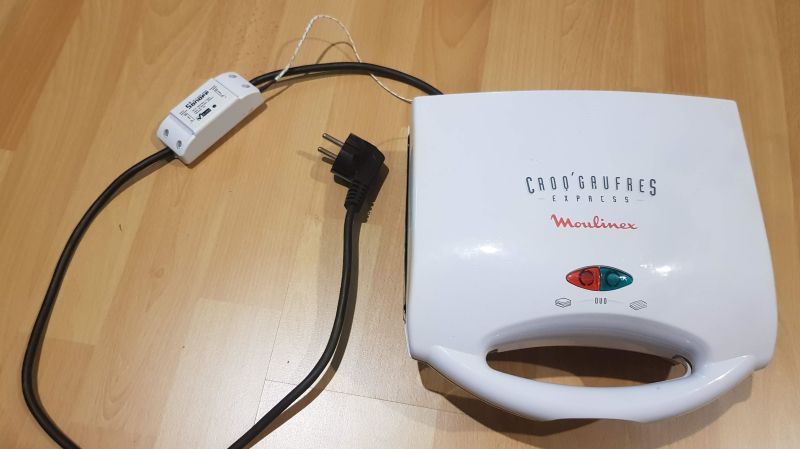There are a ton of ways to go about building your own reflow oven. Most of these builds start with, well, an oven — usually a toaster oven — with a small but significant minority choosing to modify a hotplate. But this might be the first time we’ve seen a waffle iron turned into a reflow oven.
 Of course, what [Vincent Deconinck] came up with is not an oven per se. But his “RefloWaffle” certainly gets the job done. It started with an old waffle maker and a few experiments to see just how much modification it would take to create the various thermal reflow profiles. As it turned out, the original cooking surfaces had too much thermal inertia, so [Vincent] replaced them with plain copper sheets. That made for quicker temperature transitions, plus created some space between the upper and lower heating elements for the SMD board.
Of course, what [Vincent Deconinck] came up with is not an oven per se. But his “RefloWaffle” certainly gets the job done. It started with an old waffle maker and a few experiments to see just how much modification it would take to create the various thermal reflow profiles. As it turned out, the original cooking surfaces had too much thermal inertia, so [Vincent] replaced them with plain copper sheets. That made for quicker temperature transitions, plus created some space between the upper and lower heating elements for the SMD board.
As for control, [Vincent] originally used an Arduino with a relay and a thermocouple, but he eventually built a version 2.0 that used a hacked Sonoff as both controller and switch. Adding the thermocouple driver board inside the Sonoff case took a little finagling, but he managed to get everything safely tucked inside. A web interface runs on the Sonoff and controls the reflow process.
We think this is a great build, one that will no doubt see us trolling the thrift stores for cheap waffle irons to convert. We’ve seen some amazing toaster oven reflows, of course, but something about the simplicity and portability of RefloWaffle just works for us.















Not surprising he’s from Belgium :-)
I mean sure why not, people used hot plates for years (would have been nice if HaD had shown more than a bog stock iron though). Personally its missing something, maybe you can controll it with a ESP connected to a pi serving the profile control program over AWS so I can control your reflow with alexa
Alexa, set RefloWaffle to 200 degrees Celcius.
What a great hack. I am waffled.
=-)
Cool! No, Hot! lol!!
The lower heating element remains unplugged, right?
No, it’s still active and warms up the board from below, and convection seems to make the heating quite even.
I only put the copper plate on the top heating element because radiation was too uneven (and components on top are much more fragile than the PCB itself.
It’s a difficult balance between more evenly distributing heat and adding as little weight (and thermal inertia) as possible.
Smokin!
– What a nice smell! What is It?
– Waffles “a la” Flux
Note that the first tests really brought an unusual waffle smell to my lab :-).
Anyone want to try a George Foreman reflow? We’ve gone through several grills, the nonstick coating wears pretty quickly and they’re then useless for cooking. But the heating elements work fine, and the raised grids might moderate the heat. They’re on-off devices so some sort of control would be needed—maybe just a heavy-duty light dimmer?
I made the same thing years ago. Used a waffle maker from the late 60s that had removable cast iron plates. Used some threaded rod on two corners and took it off the hinge. Worked well but it didn’t survive the move. I didn’t use anything fancy, just a manual heavy duty light dimmer and the temperature probe from my multimeter.
Here is the 23b Shop Hackerspace waffle iron mod:
http://blog.shop.23b.org/2012/07/recent-machine-shop-projects.html?m=1
I have used such a sandwich toaster like this to perform SMT repairs on ten’s of boards. It’s perfect for pre-heating because it is about 180 degrees Celsius. Then I used a hot air gun to quickly lift a component temperature above solder melting temperature and then I replaced the component.